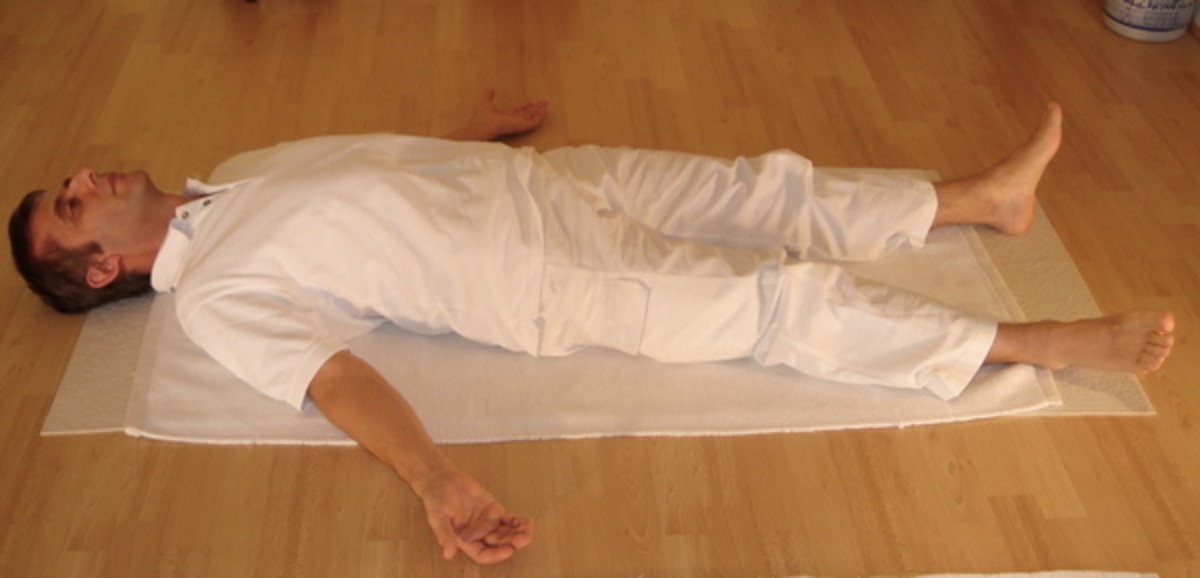Yoga Nidra: What are the Benefits?

About Yoga Nidra
Yoga gained popularity in both eastern and western part of the world since many believe it can provide the solution to their problems, whether physical, mental, emotional, or spiritual. One such technique in yoga is called Yoga Nidra.
It is the state of complete relaxation, which is often termed as deep sleep. In comparison, ordinary sleep is intended only to rest your physical body and restore all lost energy. But it does not offer relaxation nor does it replenish you mentally. Yoga Nidra offers a different form of relaxation, qualitatively speaking.

yoga-nidra-intro
Its Ancient Practice
Many are unaware of Yoga Nidra’s existence for several years dating during the ancient times. The earliest record of practicing Yoga Nidra was seen on the Mandukya Upanishads. Meanwhile, Swami Satyanada also taught eight distinct stages needed to reach the ultimate level of consciousness that one can achieve with this yoga style.
Another unique approach on practicing Yoga Nidra was stipulated by Anandmurti Gurumaa, which believed in the ability of using creative visualization to reach the end point of this practice.
Stages to Mental Practice
To learn the basic technique of reaching a deeper state of consciousness with Yoga Nidra, you need to follow the stages listed below:
1. Sequence of awareness – You can do this by rotating the focus of awareness from one part of the body to another, in a smooth manner without suffering from anxiety or burden.
2. Breathing awareness – In combining awareness on various parts of the body with the act of breathing, one can achieve total body relaxation.
3. Relaxed emotions – From relaxation on the physical level, you move deeper into attainment of relaxation on your emotions and feelings.
4. Visualization – This is considered as the final stage in your practice of Yoga Nidra, wherein it serves as a medium towards complete mental relaxation.

Chakras and Yoga Nidra
Chakras are energy channels found all throughout different parts of your body, which represent vital organs and organ systems. The concept of these chakras coincides with the different states of consciousness in the body, which are waking, dreaming, and dreaming (or Yoga Nidra).
The specific state of consciousness one person is in determines what Chakra is functioning. For instance, when you are in the waking state, it utilizes your Ajna Chakra that involves sense around your face. This includes sense of smell, sight, and hearing, among others. The focus of energy channel then shifts towards your lower chakras when you enter the sleeping state. But the state of deep sleep such as in Yoga Nidra.

Practicing Yoga Nidra
In Yoga Nidra, your aim is to stimulate activity on your brain that is related to specific parts of the body that correspond to certain areas in your brain. To complete one session of Yoga Nidra, it will take an average of 20 to 40 minutes. It usually begins with the execution of some yoga asanas or exercises, particularly those that produce a total sense of relaxation such as the Shavasana or Corpse Pose. Make sure that your eyes are shut with both palms turned upwards, slightly lifting your fingers off the ground. At this point, you should practice natural and quiet breathing.

Yoga Nidra Meditation
Visualization - Part 1 - Yoga Nidra
Yoga Nidra Instructions
Yoga Nidra and Meditation: What is the Difference?
These two concepts must come together; to be specific, meditation is an important aspect in reaching the state of Yoga Nidra. But instead of being the same, meditation is one of the many steps you need to accomplish in order to reach that state of consciousness.
When a person is meditating, she or he is still at the waking state wherein one is fully aware of the physical surroundings and activities in her outside world. But the person has reached the level of meditative state wherein her focus is so intense such that s/he is not interrupted nor does s/he loses her focus despite of these distractions. But Yoga Nidra is a combination of physical and mental body that has immersed into a deeper level of consciousness.
Breaking Myths on Yoga Nidra
Those who have minimal knowledge on what Yoga Nidra is about tend to confuse it with other concepts of yoga, particularly meditation. But this style of yoga is unique in all aspects, such as the approach, methods, and the benefits. To be more precise, Yoga Nidra offers more profound benefits than any other form of meditation you probably have encountered previously.
Relaxation and Yoga Nidra is not the same. To make it clear, relaxation is just one of several benefits that you can experience with practicing Yoga Nidra. But even that in itself represents only the core since it enables you to transcend a whole new level of consciousness instead of being focused on the physical benefits of the practice.
On the contrary, guided imagery is a method used to attain the level of Yoga Nidra. As soon as you have reached this particular state of mind, you will no longer have access to images and scenery. All you see are formless thoughts since at this point, you no longer need to concept of visualization as your mind has gotten so powerful so as to take over for you.
The same with the concept of guided imagery, Yoga Nidra is more of entering into a state of deep sleep. You have no associations with images or visuals since you have reached enough depth into your mental processes to be involved with anything superficial.

Yoga Nidra Total Relaxation No More tension
Its Impact To Your Life
The fact that the practice of yoga nidra hinges on the mind, it has the potential to deliver profound results. Indeed, it is far more challenging than doing physical yoga postures, which many believe are quite difficult and intimidating.
In the process, the ability to increase your mental strength through Yoga Nidra enables you to gain a deeper insight into yourself and your true nature. It also opens up a new dimension in your mental perspective so you attain a broader view of life and all the experiences you have to go through. On a practical level, your increased ability for focus, concentration, and overall mental performance can benefit you at the work place, home, or school. But the biggest benefit of all is your capacity to eliminate fears, worries, and anxiety leading to a more contented life.











